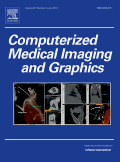
COMPUTERIZED MEDICAL IMAGING AND GRAPHICS
Scope & Guideline
Pioneering Insights in Computerized Medical Imaging
Introduction
Aims and Scopes
- Medical Image Analysis and Interpretation:
Research on algorithms and techniques for analyzing and interpreting medical images, focusing on improving diagnostic accuracy and efficiency using deep learning and machine learning approaches. - Image Reconstruction Techniques:
Development of advanced image reconstruction methods, including generative models and convolutional neural networks, to enhance image quality and reduce artifacts in various imaging modalities. - Segmentation Algorithms:
Innovative segmentation techniques for accurately delineating anatomical structures and pathological regions in medical images, utilizing both supervised and unsupervised learning methods. - Multimodal Imaging Integration:
Research on integrating data from multiple imaging modalities (e.g., MRI, CT, PET) to provide comprehensive insights into patient health and disease progression. - Radiomics and Predictive Modeling:
Exploration of radiomics, which involves extracting quantitative features from medical images to predict clinical outcomes and guide treatment decisions. - Uncertainty Quantification and Explainability:
Investigation into methods for quantifying uncertainty in medical image analysis and enhancing the interpretability of deep learning models.
Trending and Emerging
- Deep Learning Innovations:
A significant uptick in research employing deep learning architectures for various medical imaging tasks, including segmentation, classification, and image enhancement, reflecting the technology's transformative impact on the field. - Generative Models and Synthesis Techniques:
Emerging interest in generative models, such as GANs, for synthesizing high-quality medical images from low-quality inputs, demonstrating potential for improving diagnostic capabilities. - Explainable AI in Medical Imaging:
Increasing focus on developing explainable AI models to enhance the interpretability of machine learning outputs, which is crucial for clinical acceptance and trust in automated systems. - Real-Time and Dynamic Imaging Approaches:
Growing research on real-time imaging solutions and dynamic analysis methods, particularly in monitoring disease progression and treatment response, showcasing advancements in imaging technologies. - Integration of AI with Traditional Imaging Modalities:
Trends towards integrating AI techniques with conventional imaging modalities to enhance diagnostic workflows and improve patient outcomes, indicating a shift towards more hybrid approaches.
Declining or Waning
- Traditional Image Processing Techniques:
A decreasing emphasis on classical image processing methods (e.g., histogram equalization, basic filtering) as research pivots towards more advanced deep learning approaches that yield better performance. - Manual Annotation Methods:
A decline in research focused on manual annotation techniques for medical images, as automated and semi-automated methods utilizing AI are increasingly favored for efficiency and accuracy. - Basic Machine Learning Algorithms:
A waning interest in traditional machine learning algorithms (e.g., SVM, decision trees) in favor of deep learning methods that have demonstrated superior performance in complex medical imaging tasks.
Similar Journals

Imaging
Elevating Standards in Imaging ResearchImaging, published by AKADEMIAI KIADO ZRT, is an esteemed open-access journal dedicated to the field of medical imaging, established in 2020. With an E-ISSN of 2732-0960 and based in Budapest, Hungary, this journal provides a vital platform for the dissemination of cutting-edge research and advancements in imaging techniques, especially in the realms of radiology, nuclear medicine, and ultrasound technology. While currently positioned in the Q4 category across multiple medical specialties, the journal continues to strive for improvements in visibility and impact, contributing to the evolving discourse in medical imaging. The journal aims to facilitate an inclusive and collaborative environment for researchers, professionals, and students, inviting them to share their findings and insights to enhance the field's development. With open-access availability since its inception, Imaging ensures free and easy access to its content, fostering a greater understanding and appreciation of innovative imaging practices worldwide.
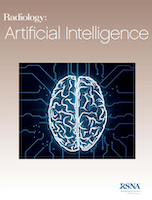
Radiology-Artificial Intelligence
Charting New Territories in Radiology and AIRadiology-Artificial Intelligence is an esteemed journal published by the Radiological Society of North America (RSNA), focusing on the intersection of radiology and artificial intelligence. Since its inception in 2019, this journal has rapidly established itself within the academic community, achieving a remarkable Q1 classification in 2023 across multiple categories, including Artificial Intelligence, Radiological and Ultrasound Technology, and Radiology, Nuclear Medicine and Imaging. With an impressive impact factor reflected by its high Scopus rankings—6th in the realm of Radiology, 3rd in Radiological Technology, and 25th in Computer Science—this journal stands as a crucial platform for groundbreaking research and innovation. Researchers, professionals, and students alike will find this publication an invaluable resource for advancing their understanding of AI applications in radiology, enhancing diagnostic capabilities, and improving patient care. The journal operates on a non-open access model, ensuring high-quality peer-reviewed content. Located in Oak Brook, Illinois, the RSNA continues to lead the field by promoting excellence in the integration of artificial intelligence into medical imaging practices.
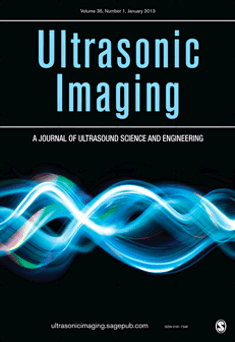
ULTRASONIC IMAGING
Exploring New Dimensions in Ultrasonic ResearchULTRASONIC IMAGING, published by SAGE PUBLICATIONS INC, is a leading journal within the fields of Radiology, Nuclear Medicine, and Imaging, with a particular focus on advancing the science and application of ultrasound technology. Since its inception in 1979, the journal has provided a platform for high-quality research, featuring innovative studies that bridge theoretical advancements and practical applications, making it an essential resource for researchers and professionals. With a notable impact factor reflecting its robust contribution to the medical community (2023: Q2 rankings in both Radiological and Ultrasound Technology and Radiology, Nuclear Medicine, and Imaging), ULTRASONIC IMAGING serves to disseminate pivotal developments in diagnostic imaging techniques, enhancing the understanding of ultrasound's role in patient care. Researchers are encouraged to explore this journal's collection of cutting-edge articles that push the boundaries of knowledge in ultrasound imaging and its implementation in clinical practices.
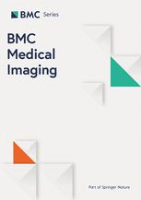
BMC MEDICAL IMAGING
Unveiling New Frontiers in Medical Imaging Research.BMC Medical Imaging is a premier open-access journal dedicated to advancing the field of radiology, nuclear medicine, and imaging technologies. Published by BMC in the United Kingdom, this journal serves as a vital resource for researchers, clinicians, and students, fostering a collaborative environment for sharing innovative findings and methodologies in medical imaging. With a commendable impact factor and an impressive Scopus ranking within the top 35% of its category, BMC Medical Imaging provides a platform for high-quality research to be disseminated widely and freely since its inception in 2001. The journal aims to cover a diverse array of topics, from advanced imaging techniques to their clinical applications, enhancing the understanding and effectiveness of diagnostic practices. By contributing to the body of knowledge and facilitating open access to research, BMC Medical Imaging plays a pivotal role in shaping the future of medical imaging and improving patient care.
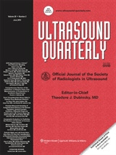
Ultrasound Quarterly
Exploring the Future of Ultrasound Technology.Ultrasound Quarterly is a leading journal published by Lippincott Williams & Wilkins, dedicated to advancing knowledge and practice in the fields of radiology, nuclear medicine, and imaging. Established in 1988, the journal has served as a vital platform for researchers, clinicians, and students seeking to stay abreast of the latest advancements and techniques in ultrasound technology. With an impact factor that reflects its significance in the field—ranking in the Q3 category within its specialty based on the 2023 metrics—this journal reaches a global audience, facilitating knowledge dissemination and fostering innovation. Ultrasound Quarterly publishes original research, reviews, and clinical studies, making it an essential resource for professionals committed to enhancing patient care through effective imaging practices. To explore its comprehensive articles, visit the journal's website for easy access to the latest research findings.

Chinese Journal of Academic Radiology
Fostering Collaboration and Excellence in Imaging SciencesChinese Journal of Academic Radiology is a leading publication in the field of Radiology, Nuclear Medicine, and Imaging, published by SpringerNature. With an ISSN of 2520-8985 and E-ISSN 2520-8993, the journal aims to bridge the gap between academic research and practical application in radiological sciences. Recognized for its contributions to the advancement of imaging technology and patient care, it currently holds a Q3 quartile ranking for 2023. The journal has a commitment to sharing innovative research findings that address pressing challenges in the field, thereby fostering collaboration and knowledge exchange among researchers, professionals, and students. Although it does not currently offer open access options, the journal's comprehensive reviews and high-quality research articles present a significant resource for those seeking to deepen their understanding of radiological practices and innovations. The Chinese Journal of Academic Radiology continues to play a vital role in shaping the future of radiological science through rigorous scholarship and global discourse.

International Journal of Biomedical Imaging
Illuminating Pathways in Medical Imaging ResearchInternational Journal of Biomedical Imaging, published by HINDAWI LTD, stands as a pivotal resource in the field of biomedical imaging, bridging the gap between technological innovation and clinical application. Since its inception in 2006 as an Open Access journal, it has become accessible to a global audience, facilitating research dissemination and collaboration. The journal has garnered recognition within the academic community, achieving a notable Q2 category ranking in Radiology, Nuclear Medicine, and Imaging, with an impressive Scopus rank of 16 out of 333, placing it in the 95th percentile of its field. With coverage from 2006 to 2024, the journal encompasses a broad spectrum of studies focused on advancements in imaging technologies, methodologies, and clinical applications, making it an indispensable source for researchers, professionals, and students eager to stay at the forefront of biomedical imaging innovation.

JOURNAL OF DIGITAL IMAGING
Pioneering Research in Digital Imaging ApplicationsJOURNAL OF DIGITAL IMAGING, published by Springer, is a premier journal dedicated to the field of digital imaging, encompassing significant developments in the intersecting disciplines of radiology, computer science applications, and ultrasound technology. With its impressive Q1 ranking in the categories of Radiology, Nuclear Medicine and Imaging, and Radiological and Ultrasound Technology, and a substantial Q2 ranking in Computer Science Applications, this journal is positioned at the forefront of research dissemination in these vital areas. The ISSN 0897-1889 and E-ISSN 1618-727X signify its broad reach and accessibility, while its Scopus rankings demonstrate its robust impact in the academic community, ranked #41/333 in Radiology and earning a notable 87th percentile status. Since its inception in 1988, the journal has served as a vital resource for researchers and professionals seeking to advance their understanding of digital imaging technologies and their applications. Although it does not currently offer open access options, it continues to foster scholarly dialogue and innovation, making it an indispensable platform for those committed to excellence in imaging science and technology.

Visual Computing for Industry Biomedicine and Art
Empowering Innovations Across Biomedicine, Industry, and ArtVisual Computing for Industry Biomedicine and Art, published by SPRINGER SINGAPORE PTE LTD, is an esteemed Open Access journal that has made significant contributions to its fields since its inception in 2018. With an impressive scope that intersects Computer Graphics, Computer Science, Medicine, and the Visual Arts, this journal serves as a pivotal platform for disseminating research and advancements that address contemporary challenges and innovations in visual computing. Notably, it holds a commendable standing in various Scopus rankings, achieving Q2 status in critical categories such as Computer Vision and Pattern Recognition and Visual Arts, which underscores its impact and reach within the academic community. Its promulgation of high-quality research fosters synergy between diverse disciplines, making it an invaluable resource for researchers, professionals, and students eager to engage with cutting-edge developments in both technology and the arts. The journal's commitment to accessible knowledge, evident through its Open Access offering, further enhances its role as a beacon for scholarly discourse in visual computing.

JOURNAL OF MATHEMATICAL IMAGING AND VISION
Exploring the Intersection of Mathematics and Visual PerceptionJOURNAL OF MATHEMATICAL IMAGING AND VISION, published by Springer, stands as a significant platform for advancing the fields of applied mathematics, computer vision, and pattern recognition, among others. With an ISSN of 0924-9907 and an E-ISSN of 1573-7683, this esteemed journal is based in the Netherlands and has been contributing to the scholarly discourse since its inception in 1992, with a converged focus through 2024. It has achieved reputable standings within several quartiles, including Q2 rankings across applied mathematics, geometry and topology, and condensed matter physics, reflecting its impact and relevance. Notably, the journal ranks within the top 5% in Geometry and Topology and maintains robust standings in Statistics and Probability. The JOURNAL OF MATHEMATICAL IMAGING AND VISION is dedicated to publishing high-quality research that bridges theoretical perspectives with practical applications, making it an essential resource for researchers, professionals, and students who are exploring the cutting-edge of mathematical imaging and its interdisciplinary applications.